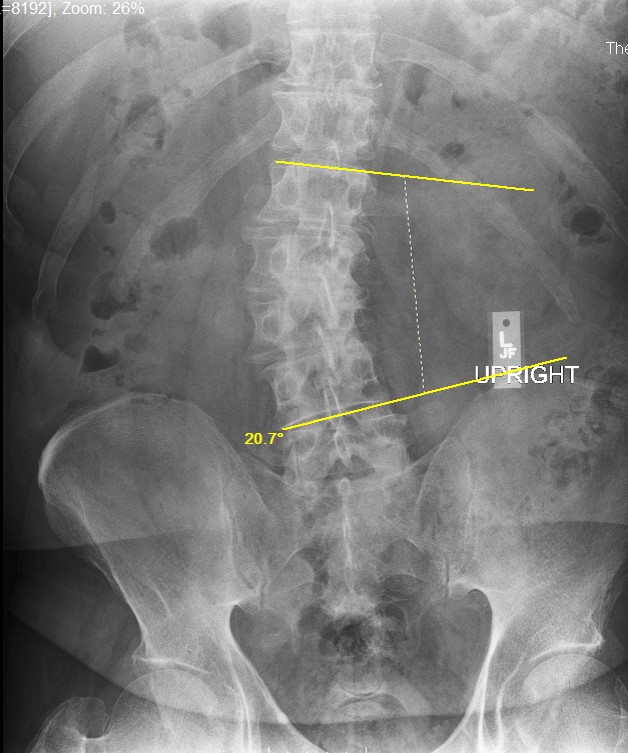
•You are trying to predict what symptoms this patient has based upon imaging
•21 degree scoliosis- balanced (T12 over S1)
•Angular collapse at L5-S1 Right (could he have a foraminal collapse)
•Lateral listhesis of L3 on L4 to the right
•IDR at L2-3 Left
Lateral X-ray
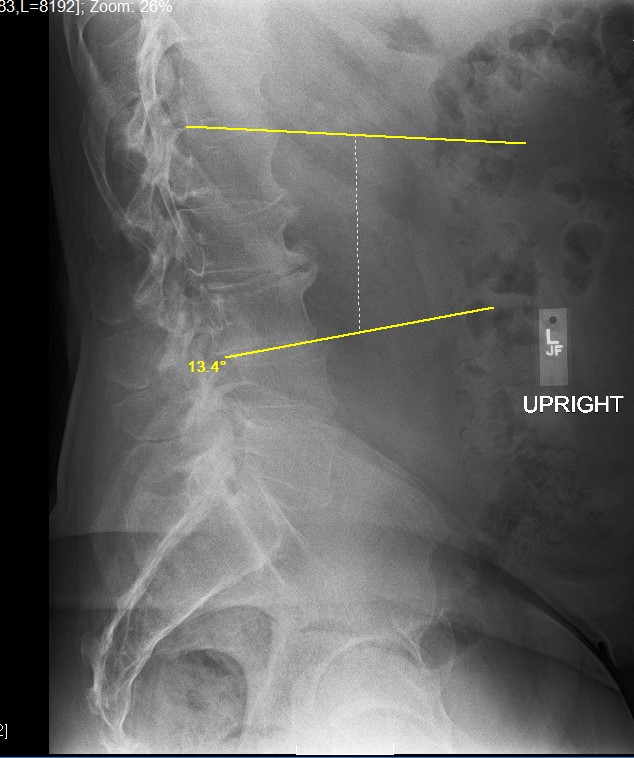
•Lateral notes thoraco-lumbar kyphosis and multilevel IDR
•Significant retrolisthesis of L3 on L4
Flexion
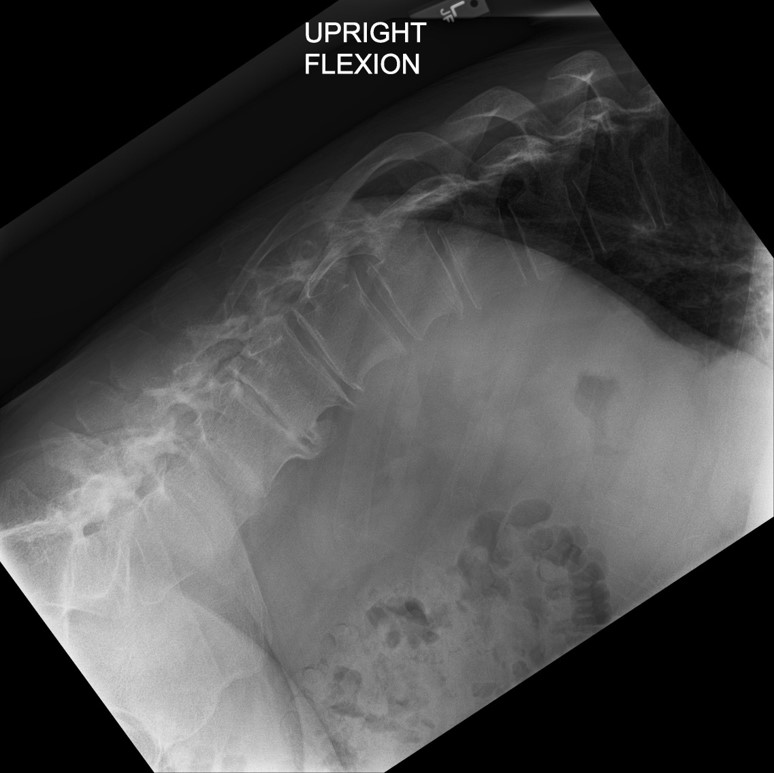
•Flexion notes no instability. The spine is stiff and only flexes at the thoracolumbar kyphosis
Extension
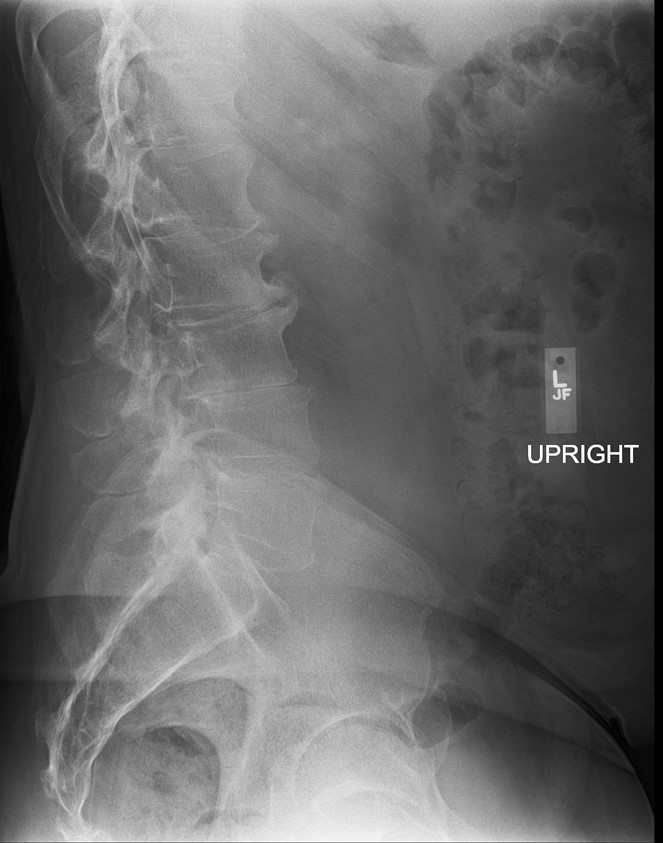
•Extension notes the kyphosis can somewhat correct to neutral
T2 Sagittal Left
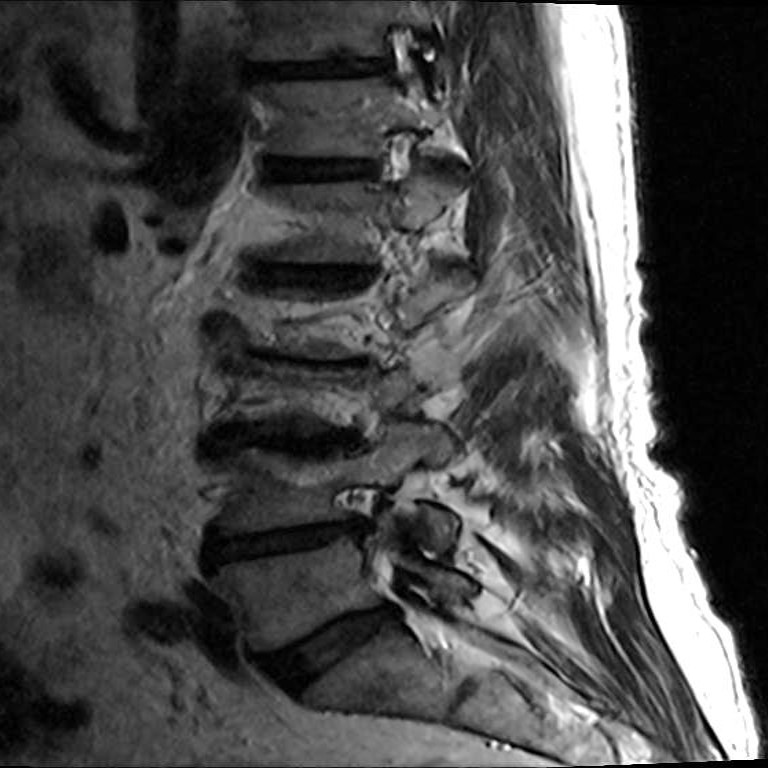
•Scoliosis prevents viewing whole spine on one image
•No left foraminal stenosis
T2 Sagittal Right
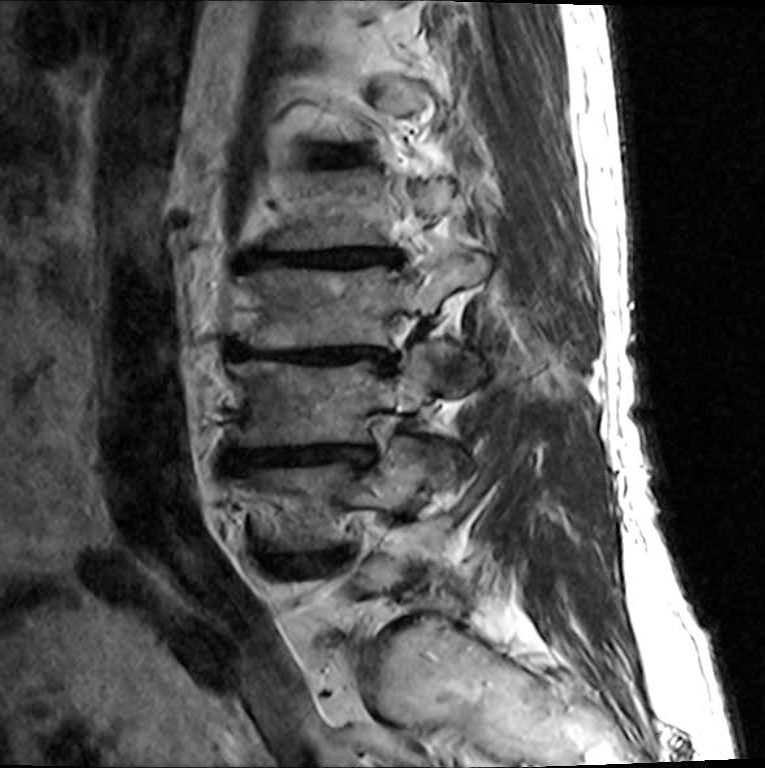
•Right does have moderate foraminal stenosis at L3-4 (expected?)
•Remember L3-4 Right lateral listhesis
“Central T2 Sagittal”
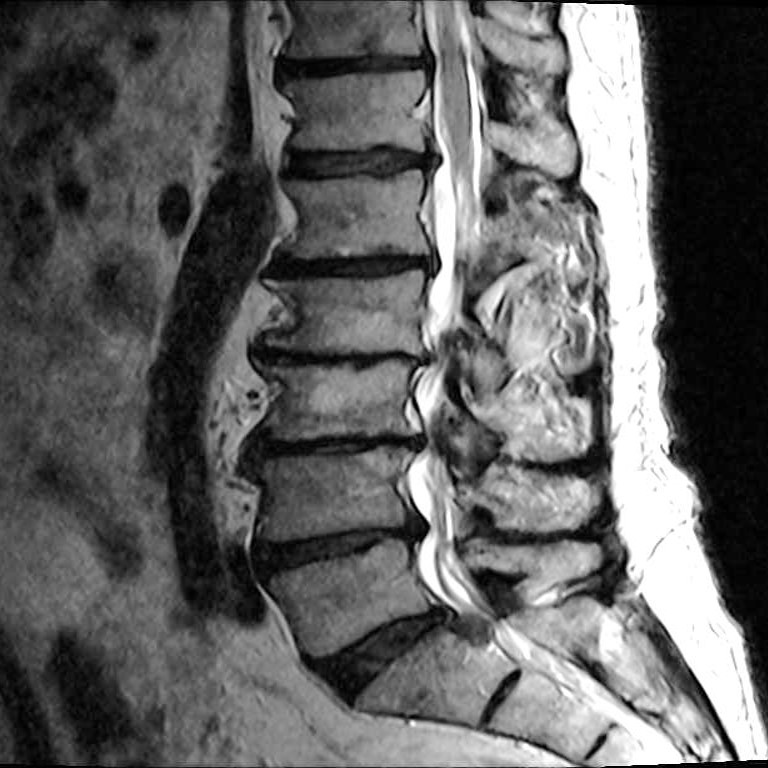
•Extruded HNP L5-S1
•IDR at L2-3 and L3-4
STIR Sagittal
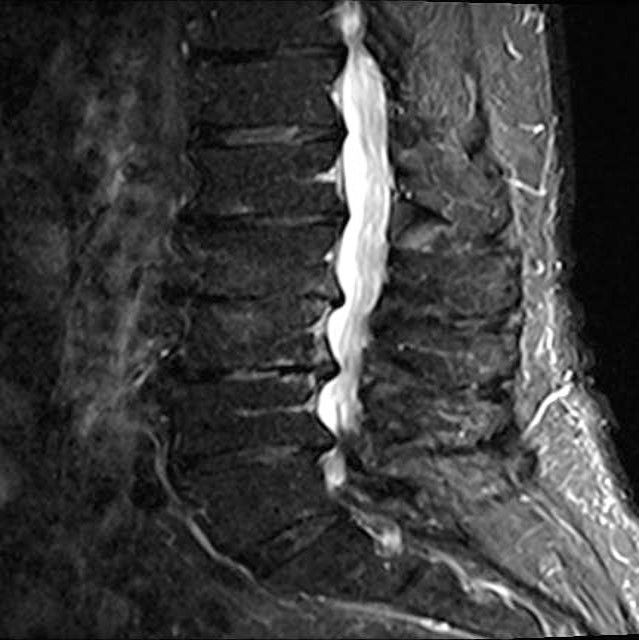
•Only mild inflammatory changes at L2-3 and L3-4
L5-S1 Axial
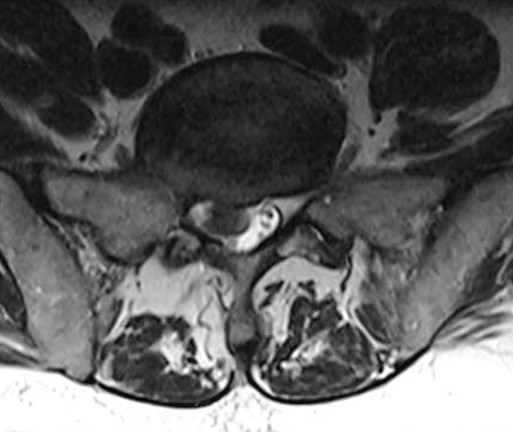
•Large extruded HNP compressing R S1 root
Axial L4-5
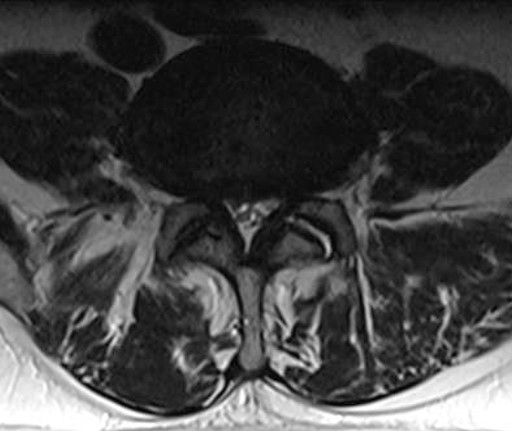
•Moderate central stenosis
•Mild degenerative facet disease
Axial L3-4
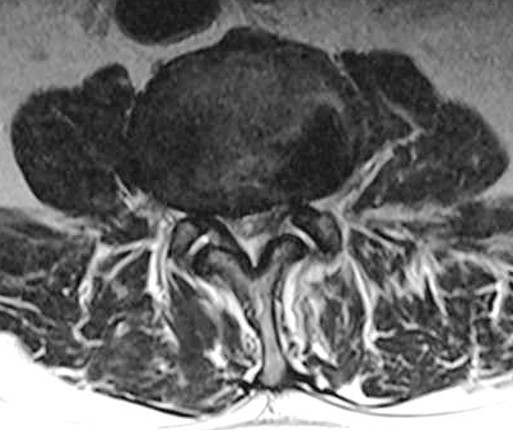
•Moderate central stenosis
•Mild degenerative facet disease
Axial L2-3
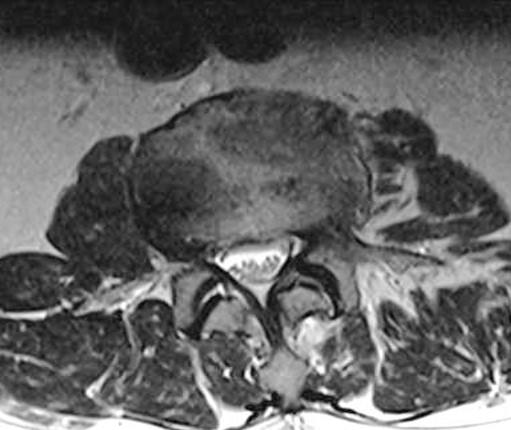
•Mild degenerative changes
Add up all the potential alignment and discal pain generators
•21 degree degenerative scoliosis
•Angular 11 degree collapse at L5-S1 (however no foraminal stenosis on sag MRI)
•Thoracolumbar degenerative kyphosis 13 degree
•IDR L2-4 without significant Modic changes
•Scoliosis is balanced so no penalty for alignment pain
•Angular collapse L5-S1 without foraminal or lateral recess stenosis can cause L5-S1 facet pain
•Degenerative kyphosis can cause flat back syndrome
•IDR can cause localized lower back pain
Add up all the neurological compressive pain generators
•L5-S1 extruded right HNP with S1 root compression
•Central stenosis L3-4 and L4-5
•Right foraminal stenosis L3-4
•Right S1 radiculopathy increased with sitting
•Neurogenic claudication or stenotic lower back pain
•Right L4 radiculopathy increased with standing/walking
What is the history and what are the patient’s symptoms?
•He currently describes lower back “discomfort“ which tends to be worse with walking any distance and relieved with bending forward. At times he may have difficulty standing up straight and will stand with a bent knee flexed forward posture.
•His other symptom which is currently more significant to him, is numbness in the right buttock radiating down to the outside of the right foot. This tends to be aggravated with standing still for any period of time and may also be relieved with sitting. He seems to be reasonably comfortable with walking but has numbness in his right foot which makes it difficult for him to feel the ground.
Patient Symptoms Con’t
•The right leg symptoms started in May 2018 after lifting a beam in his cabin. By August 2018 he had his first injection which was a right L5-S1 epidural. This actually caused worsening right leg pain for the first 3 days.
•He rates the back pain as a 4–6/10. Buttock and leg pain he rates a 3–5/10 in his right side only.
•He normally likes to canoe, hike, cross-country ski, and bike. He has tried to do these activities over the past year since his symptoms started but has only been able to do so at a limited level compared to his normal. He is concerned with a progressive numbness in his right leg.
What diagnosis fits with his imaging findings?
•Stands with bent knee-flexed forward stance. Could be flat back syndrome but has lower back pain and R leg numbness (antalgia)
•R leg pain started with a loading action making HNP more probable
•Lower back pain with standing relieved with bending forward- kyphosis and IDR are worse with bending forward but stenotic lower back pain improves with flexion

